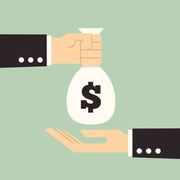74% of Providers See Increased Patient Financial Responsibility
With 74 percent of providers reporting an increase in patient responsibility for healthcare costs, healthcare revenue cycle management strategies have become more consumer-oriented.
- A recent report from InstaMed found that 74 percent of healthcare providers reported an increase in patient financial responsibility in 2015, which has prompted healthcare revenue cycle management strategies to focus more on consumers.

“With the dramatic shift in cost sharing and ultimately healthcare payment responsibility, a new, critical stakeholder has emerged, the consumer,” explained the study. “With the focus shifted to the consumer, both payers and providers will be challenged to overhaul their payment processes or face lost revenue and poor customer retention.”
Traditionally, healthcare providers centered their revenue cycle management strategies on a small group of payers. But as more patients enroll in individual health insurance plans, providers have started to collect more payments directly from customers.
With numerous insurance options, more individuals are choosing plans that require higher out-of-pocket costs. During the 2016 open enrollment period, 12.7 million consumers enrolled in a public or private health exchange program and about 90 percent of these individuals selected a high-deductible plan. This has caused consumers to pay 225 percent more out-of-pocket healthcare costs since 2006.
The increase in patient responsibility for medical costs is a major challenge for healthcare revenue cycle management. Researchers found that providers only anticipate collecting 50 to 70 percent of a patient’s balance after a visit and 70 percent of providers stated that it takes a month or longer to receive the payment from a patient.
“Missing or late patient payments directly impact the bottom line of a provider’s business, potentially threatening the future of the organization,” wrote the authors of the study. “To maintain cash flow, providers need to look at other industries that meet a high level of payment assurance through a more consumer-friendly payment experience.”
To improve healthcare revenue cycle management methods, providers may need to develop more consumer-friendly options for healthcare payments.
The report stated that almost half of consumers would change providers for the ability to better understand patient responsibility and pay healthcare costs using a preferred method.
Researchers uncovered that more consumers report feeling confused by medical bills from their provider, which are mailed weeks or months after the appointment and do not always explain what is due or how to pay it. Consumers are also confused by separate explanation of benefits letters from payers that look like medical bills.
Providers may need to invest in more electronic payment options to simplify payment methods and retain patients. The study showed that 70 percent of consumers stated that they preferred an electronic payment method, such as credit cards or eChecks.
Sixty-four percent of consumers also expressed an interest in using a mobile payment system, including Apple Pay, Samsung Pay, or Android Pay.
Additionally, consumers are seeking to make healthcare payments through a single convenient system. Seventy-one percent of individuals preferred to make all their payments in one place.
As patients are calling for more electronic payment methods, the healthcare industry should reduce print-and-mail methods for payment processing, such as billing statements, explained researchers.
Under HIPAA, the industry is supposed to transition to complete electronic transactions, but some providers are struggling to implement more virtual payment methods.
Consumers noted that they received an average of three printed statements from providers per healthcare encounter. However, only 24 percent preferred using checks to make healthcare payments.
Transitioning away from paper communications could also save the healthcare industry billions of dollars, explained the report.
“As the industry continues to grow rapidly, paper in the healthcare payments process will be unsustainable to any business model,” explained the study. “Healthcare organizations must find ways to move to electronic delivery of healthcare data and payments to streamline healthcare payments.”
More healthcare providers are also urging payers to eliminate paper checks and forms. The study reported that 84 percent of providers preferred to receive payer payments through electronic funds transfer or electronic remittance advice, even though 89 percent had received paper checks and explanation of payments from one or more of their payers.
Despite the benefits of paperless billing, some healthcare stakeholders may be reluctant to completely transition to electronic methods due to data security concerns. About 81 percent of providers asserted that payment security was a major concern when collecting payments.
The healthcare industry is pushing to make providers and payers more accountable for quality care and lower healthcare costs, but this has also created more accountable consumers. As patient responsibility increases, healthcare organizations may need to transform their revenue cycle management strategies to include more input from consumers, not just payers.
Dig Deeper:
• What is the Future of Revenue Cycle Management?
• 6 Steps for Safeguarding the Healthcare Revenue Stream
